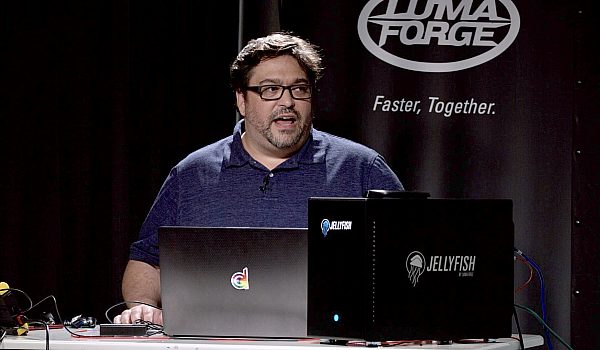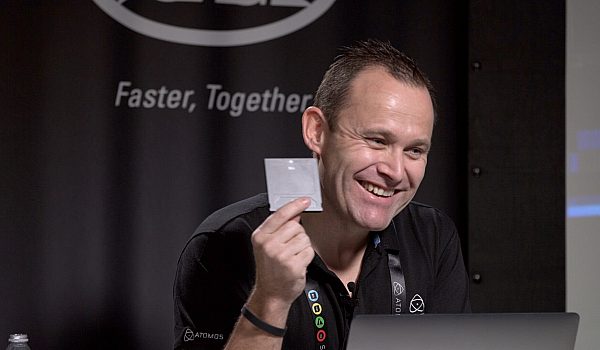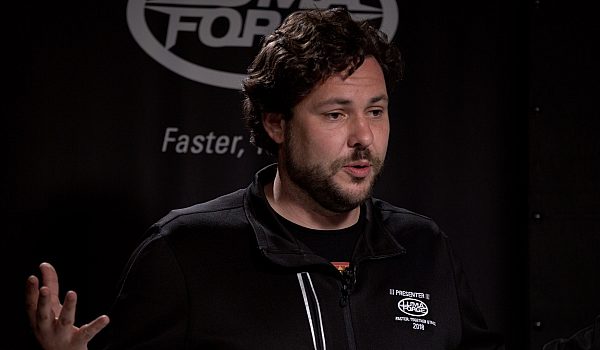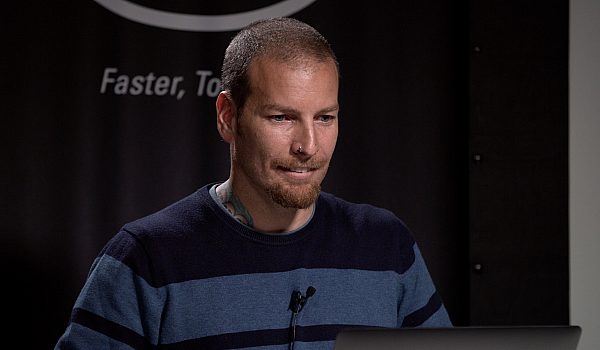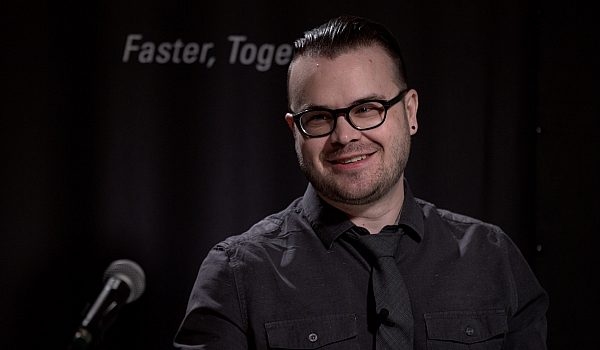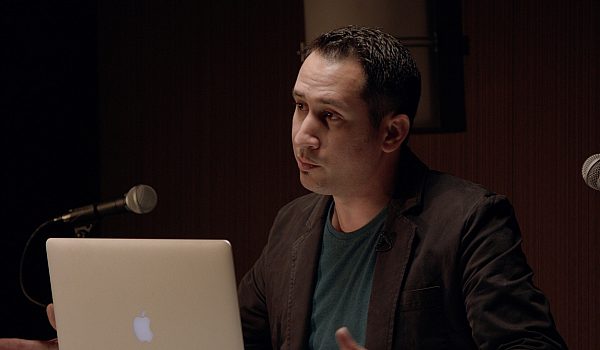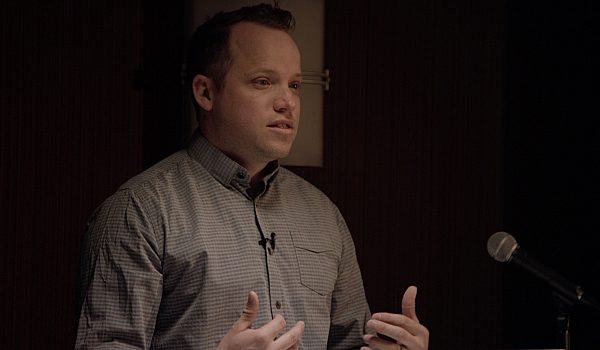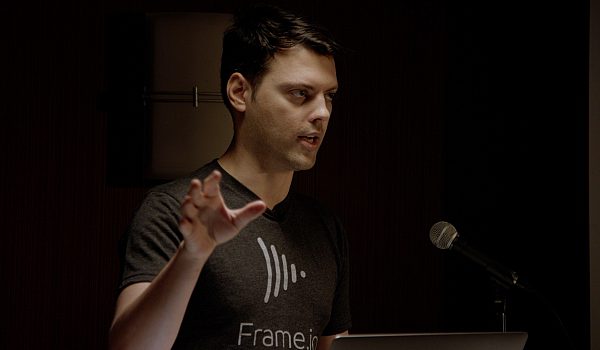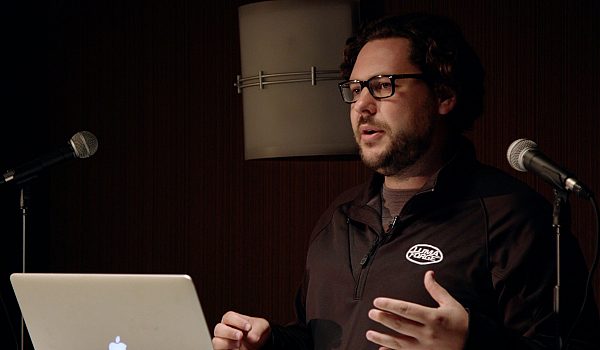How do the human eye, the camera sensor, and lighting work together? Colorist & DIT, Adrienne Klotz-Floyd, discusses the interaction of lighting, camera sensors, and post production when it comes to getting proper color for your film project.
Good evening, I'm Adrienne, and I'm here tonight to talk about the color of production. Now we're not really talking set design, costumes, all of that, now we're gonna touch on it, but that's not really the focus. We're gonna talk about the overall color and how that happens in production. Now I've had a bit of a sordid past in the industry, I've worked as a scenic painter, moving light programmer, lighting director, cinematographer, DIT, and colorist.
So all of this has kind of melded together and given me a little bit of an interesting insight into what's actually happening when we talk about color regarding production. So when we talk about the color we're missing, what does that mean? Well it's a combination of the lights and the cameras and the pigments and then the workflow, it's all about color science. Now a lot of you are gonna go, oh gosh, are we talkin' PhDs, are they hiding in the backroom at the production house, no. This is not who this is for. This is about the producers, the gaffers, the grips, anybody who's ever wondered what we're looking at in a DIT tent and why it's so important. It's in our everyday lives, it's in the TV settings we use, all those different settings and then you decide which one you like best, that's color science. It's also in the lights we choose for our house, and the lights we use on set. Let's start with how our eyes naturally see.
We all know from childhood and health class that we have rods and cones, rods take care of the exposure, or the luminance in a room, and the cones take care of the color. Just as an example of how our eyes work, we have two squares here. One's yellow, one's red, and they both have a color in the middle, one looks like a dark pink, the other looks like a light pink, but are they really? Is that really what we're looking at? No, because they're actually the same color inside, which means that color is relative to what's going on beside it, so we have these receptors in our eyes, they see these colors, and our brain interprets that information, but it does it relative to each other thing in the room and in the scene. This is the visible light spectrum. We see red to violet, ROYGBIV, as we've learned in school again, and this is the light spectrum at different times of day.
So at noon we have the full spectrum of light that we can see, from violet all the way through the reds. At sunset though, we see this drop in blues and violets, and we shift to mostly reds, and this is the magic hour. This is what everybody loves to shoot with in this industry, so let's move on to some of these light sources we have. We have compact fluorescents, and here with that green spike I think we all know that's why those 1980 office photos all look like they have a green filter standing in front of them, it's like, ooh, what happened? And then we have incandescent which is very similar to that sunset with that beautiful, red, warm color, less blue, and it kind of explains why they've been around so long. Why did we need to replace them? They gave us that beautiful light we loved from magic hour. And then came along the LEDs. Now granted, they save us money, they save us energy, they're cooler to run, they're easier to power, they're great, right?
Well, I don't know, are they? So the cool white LED that's supposed to be daylight is missing a large section of the light spectrum. It's missing all that beautiful violet. We've got a big dip between the blue and the green. It doesn't necessarily have all the green spectrum in it, and look at how much red is missing. And then we go to warm light LED, which is supposed to be like the tungsten light, and it's got a blue spike, what the heck? And we're missing a bunch of that red spectrum that gives us that beautiful warm light again. If you don't have those light spectrums that match the pigment in a fabric or paint or some other surface, you will not see these beautiful colors. If the spectrum of light is not there to reflect off the surface, you will never be able to see it with your eye or with your camera. This goes not just fabric, this goes for skin tones and makeup, and it also goes for paint and pigments, anything like that.
Now how does it all kinda work? Bear with me here. We see a pair of red gloves. Now would you say those gloves are red in this image? I think anybody here would say those gloves are black. What happened? Well, there was one of two things, there was either no red light in this room, no red light spectrum, and that light was completely blue spectrum, and the light was not there then to reflect off and pick up by the sensor, or we have third component to this, and it is that you were in that room, and those gloves maybe looked a shade of red, and when you got that photograph back you were surprised because they looked black, and you had something going on with the sensor. So how do camera sensors work? Well, we know about the Bayer Pattern, most of us, red, blue, green, more green channels because that's kinda how our eyes naturally see. The camera picks up red, blue, green through the photosites, it sends it through a de-Bayer process, which moves some of that around, and sends it out finally as an image that we see on a monitor or a screen.
Now if there is an issue and that set from that camera of red, blue, green is missing some of that spectrum that it sees, you may have ended up with those black gloves even though you saw red. So let's take a look at this. So again we're gonna visit our warm white light, we're missing some red spectrum, we've got a spike in the blue. And this is what a camera sensor maybe looks like. Now every camera sensor's slightly different in this, some are more sensitive to blue than red, some maybe have a spike in the green, they all have a pattern of the red, blue, green that they see. And we already see that some of that is not gonna pick up that spectrum of light, whether it's daylight, whether it's another fixture, it's just not gonna be there for that sensor to see, and then if you have a color that you see with your eye as a true blue, the camera's never gonna see it again because it's mismatched not just with the sensor, but also with the light, the light spectrum to get that violet in of that pigment is just not there to see.
So how do we keep this from being a problem when we're doing production? The main thing is do camera tests with the light you're gonna use, with the camera you're gonna use, with the talent you've hired for the job, in the same makeup and costumes that you plan to use, even if you don't have the costumes built, get the fabric if you know what fabric you're gonna stitch those into in the same setting, as close as you can get. If you're gonna be on a stage, and you know you're gonna have painted walls, get something at least back there that is a similar color and texture. If you're gonna be outside at a certain time of year or at a certain time of day, do the best you can to get as close as you can to that time of day when you do these camera tests. Using the expected post-production workflow as a last, speakers just talked about, with what's happening with HDR and how things have to be tone-mapped, you need to run those camera tests through your post-production process.
You also never know what some of these input and output transforms may do. This is the next thing, and this comes from my days as board op and moving light programmer. Give your programmers a calibrated monitor that matches your DITs and your colorist. These people are the ones who are mixing these lights, and I can't tell you how many times I was told mix a pink color on stage, and I hear from a video controller or a DIT, why is there orange on stage? They can see it, they see what the camera's getting. I'm maybe seeing, if I peeked around the wall, what my eye sees, and we already know that doesn't match the camera's, or I have an additional camera that I've set up in the room somewhere so that I can get a picture of the stage to figure out where the placement needs to be on those moving lights, and I'm mixing color to that, and we know that that's not gonna match our production cameras. It's also, those monitors I get, you can't guarantee the color and the color shifts in them.
This is gonna save you guys a ton of time. If you're a gaffer, walk to a calibrated monitor to dial in your RGB lights, it's gonna save you a headache. Okay, I'm off my soapbox. Always carry a tungsten light kit for those people in your production that you didn't get to do a camera test with. I can't tell you how many times I've seen somebody show up, maybe they did their own makeup at home, and they're runnin' in between projects or something, and you've got 10 minutes with them on TV, or they're flying in for a day and flying out for a day because they're doing a supporting role, and if they don't look good under the color temperature of your LED fixtures, we cannot get that back in post. If the light is not there to reflect off their skin, it's gone.
So let's talk about Ruby. Ruby was a project I recently did. It was lit with daylight, old fixtures in a bookstore, and LED lights, and while Ruby always looked good, the young lady, this supporting actress, we could not get her skin tone right. It didn't matter what we did, she looked dead on camera. I had to go in and color grade every frame she was in, special her with a window and track it through so that ultimately we got some color in her. Now for the next project I'm doing as a DIT, I'm already in discussions with the DP on what cameras and lights we're using. We're meeting with the colorist to talk about workflow and run that all through, and then we're doing camera tests with the talent for the best choices to work with their makeup, their skin tones, and the fixtures we need to take 'cause it's a remote shoot. So I wanna thank you guys for being a great audience. I also wanna thank the folks at LumaForge for inviting me here tonight, it's been great, and if you have any other questions or need to reach out, this is where you can find me, thank you.


 Mobile
Mobile
 Tower
Tower
 R24
R24
 Builder
Builder
 Manager
Manager
 Connect
Connect
 Kyno
Kyno
 Media Engine
Media Engine
 Remote Access
Remote Access
 Support
Support
